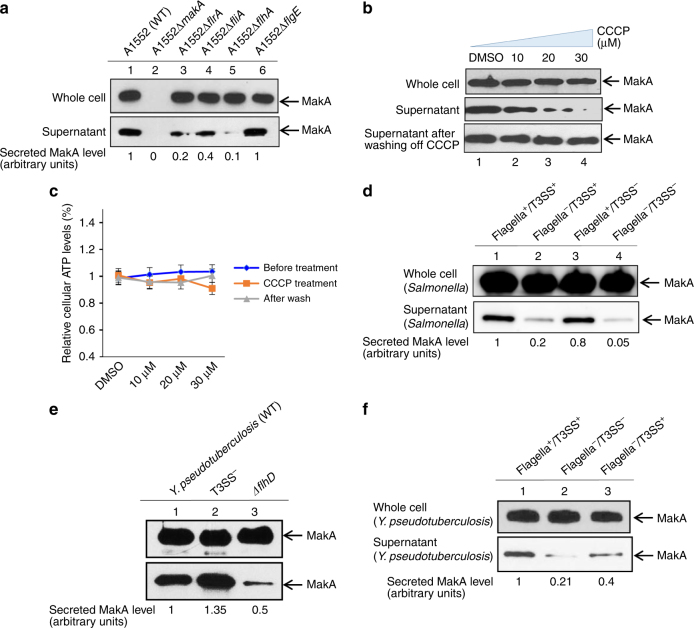Fig. 2.
Role of bacterial flagellar machinery and proton motive force in secretion of MakA. a Immunoblot analysis of MakA secretion (lower panel) and expression (upper panel) of V. cholerae strain A1552 and its flagellar cascade mutants. Immuno-reacted band intensities relative to the level of secreted MakA from the wild-type strain set to 1.0 are shown; b MakA expression and secretion in A1552 grown in LB containing DMSO or 10, 20, 30 μM CCCP (upper and middle panels, respectively), restoration of secretion following washing with CCCP-free medium (lower panel); c ATP levels in A1552 treated with different dosage of CCCP; d Secretion and expression of MakA in S. Typhimurium and its mutant derivatives ectopically expressing makA: the wild type strain LT2 (Flagella+/T3SS+), lane 1; flagellar cascade mutant (Flagella−/T3SS+), lane 2; T3SS mutant ∆spi-1, ∆spi-2 strain (Flagella+/T3SS−), lane 3; both flagellar and T3SS cascade mutant (Flagella−/T3SS−), lane 4. Immuno-reacted band intensities relative to the level of secreted MakA from the wild-type strain set to 1.0 are shown; e Secretion and expression of MakA in Y. pseudotuberculosis and its mutant derivatives ectopically expressing makA: the wild type strain YPIII (lane 1), T3SS mutant (lane 2), ΔflhD (lane3). f Secretion and expression of MakA in Y. pseudotuberculosis grown under conditions favoring or inhibiting flagellar T3SS and/or T3SS expression. Band intensities of secreted MakA relative to the Flagella+/T3SS+ strain are shown

